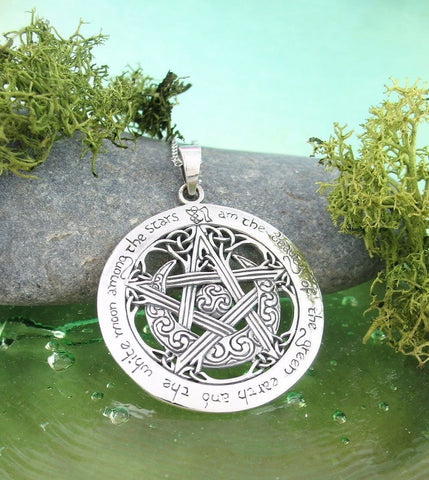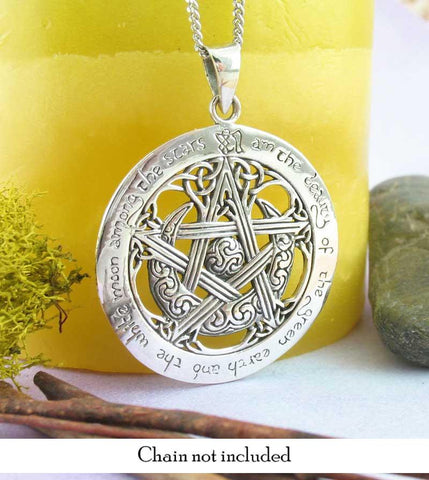Krampus, Santa's Other Little Helper

"The most wonderful time of the year" usually brings to mind warm thoughts of gifts, sweets, family gatherings, and Christmas trees, but did you know of the terrifying monsters that make their appearance during the holidays?
In America, children strive to be good all year, hoping that Santa will bring them their most wished for gifts at Christmas time. If you were naughty, the worst thing that could happen would be getting no gifts at all.
That doesn't sound so bad when you compare it to what the children of Germany and Austria had to contend with. When they were naughty, they could expect a visit from the fearsome Krampus, a hairy, half-goat/half-demon creature with the horns and hooves of a goat, fangs, and a long, pointy tongue, who thrashed around with chains and bells as he walked.
Krampus
The Krampus was a counterpart to St. Nicholas and is likened to Satan. It is thought that the chains he carried symbolized the Christian idea of the binding of the Devil. St. Nicholas would reward good children with gifts or candy, while leaving the Krampus to deal with the bad children.
Stories of the Krampus vary, and there is no one definitive version, but it is said that he arrives on the evening of December 5th, a.k.a. Krampusnacht, and visits houses throughout the night, working alongside St. Nicholas. In other tales, children would leave a shoe or boot outside their door and wait until the morning to see what St. Nicholas had left them. If you were a good kid, you'd get a gift, if you were bad, you'd get either a twig, branch, or lump of coal.

This twig, branch, or piece of coal was a sign from St. Nicholas that you were to be punished by the Krampus. Anytime throughout the Christmas season, the Krampus might beat you with branches, or if he felt like it, stuff you into his sack or basket and take you away, either to be drowned, eaten, tortured, or to live with him in Hell for one year.
The Krampus is thought to have originated in pre-Christian times, but his story is fuzzy because many pagan beliefs were either forgotten or became incorporated into Christian traditions. The earliest tales come from the Austrian Alps and today are part of the culture in many central European countries.
In some parts of Austria, before the influence of Christianity, December was the month of monsters and ghouls. For pagans, winter was associated with death and the time of year when it was thought that the veil between the worlds of the living and the dead was at its thinnest. It was the time when spirits were most likely to interact with the living.
Perchta
One compelling theory of the Krampus' origins lies with the story of Perchta, a pagan goddess of the same regions, also known by the names Berchta, Percht, Bertha, and other names. Her name may mean "the bright one" and she is associated with Epiphany, the night in which the star of Bethlehem shone down.
A dual-natured goddess, she appeared either as beautiful and white as snow, or elderly, ugly, and haggard. She had one extra-large foot, sometimes described as a goose or swan foot, which was thought to symbolize her ability to shapeshift into an animal form.
Like a single entity that did the work of both Santa and the Krampus, Perchta delivered both reward and punishment. In mid-winter, she was said to roam the countryside and visit children and young servants in their homes during the twelve days between Christmas and Epiphany.

She knew whether children had been good or bad all year. If they were good, she'd leave a silver coin in their shoe. If they were bad, she would take out a large knife she had hidden in her dress, slit open their belly, remove their stomach and intestines, and stuff the hole with straw, pebbles, other rubbish, and sew it back up again. This fate also awaited people who ate anything other than the traditional meal of fish and gruel on her feast day.
Perchta was accompanied by a group of spirits called Perchten. Like her, they had a dual nature and were either beautiful or ugly. Bright and beautiful Perchten, called "Schönperchten", brought good fortune and wealth. Ugly Perchten, called "Schiachperchten", had fangs, tusks, and horse tails, and were used to drive away malevolent spirits and demons.

In the 16th century, men would dress up in masks and animal furs as these ugly Perchten and go from house to house to help drive out bad spirits. Events with these loud, boisterous groups of men parading through the streets, dressed up as hideous monsters were known as the Perchtenlauf (meaning "Perchten run") and drew the ire of the Church, which saw them as displays of immoral behavior and sought to ban them.
Many villages refused to comply, while others decided to dress someone up as St. Nicholas and send him along with the men, as a sort of compromise. Eventually, the Church decided to ban the Perchtenlauf all together, but the people didn't want to give up their old traditions, so they created a new, similar creature - the horned and hairy Krampus, who served St. Nicholas.
The Church still saw the Krampus as an ungodly figure, but allowed it to be paired with St. Nicholas, so that one represented good and the other evil, which is how the Krampus came to be associated with the Devil. Integrating pagan beliefs into the religion was a common practice of the Church because it made it easier to convert people.
Today, the tradition of the Krampus is alive and well. Men still dress up as monsters on the night of December 5th and roam the streets with chains and bells, frightening children and adults, but usually in the spirit of fun. The Krampuslauf (or "Krampus run") has even travelled overseas and is gaining popularity in the United States.

While the Krampus may look evil and terrifying, we have to remember that he likely originated from the ugly Perchten, who were only ugly because they were meant to frighten away bad spirits and demons in the winter time. Also, the creation of the Krampus was just the pagans' way of keeping their traditions alive under the tyranny of the Church.
Even the modern idea of the Krampus is not evil - he only punishes bad children and reminds us that there are consequences for our actions. In this way, he is the yin to Santa's yang and represents the dual nature in all things - good is balanced by evil, light by dark, etc.
I hope you enjoyed this short exploration into the little-known tradition of the Krampus. And remember, if you ever see a terrifying monster walking through your neighborhood in December, don't worry, it's not because it's Halloween.
This article is brought to you by Woot & Hammy - "Our mission is to be a place for Wiccans, Pagans, and others to find affordable, high-quality jewelry that will help them express themselves and their beliefs, and by doing so, help to expand awareness and acceptance of them and their communities." Click here to visit our site.
References:
Wikipedia, "Krampus", November 5, 2020, https://en.wikipedia.org/wiki/Krampus
Billock, J., "The Origin of Krampus, Europe's Evil Twist on Santa", November 1, 2020, https://www.smithsonianmag.com/travel/krampus-could-come-you-holiday-season-180957438/
Basu, T., "Who is Krampus? Explaining the horrific Christmas beast", November 3, 2020, https://www.nationalgeographic.com/news/2018/12/131217-krampus-christmas-santa-devil/
Mythology & Fiction Explained, November 2, 2020, "Krampus the Demon of Christmas (Folklore Explained)", https://www.youtube.com/watch?v=Ap-8PJ3Yzak
Mythology & Fiction Explained, November 3, 2020, "Krampus, Exploring the Legend of the Christmas Demon", https://www.youtube.com/watch?v=SfndOXfJSqA
Boroughs of the Dead, November 5, 2020, "Frau Perchta, Terrifying Christmas Witch", https://boroughsofthedead.com/frau-perchta/
Wikipedia, "Perchta", November 7, 2020, https://en.wikipedia.org/wiki/Perchta
Image Credits:
St. Nicholas and Krampus: Public Domain
Krampus putting child into basket: Public Domain
Person dressed up as Perchta: Benutzer:Wald1siedel, CC BY-SA 3.0 AT <https://creativecommons.org/licenses/by-sa/3.0/at/deed.en>, via Wikimedia Commons
Group of Perchten in St. Johann: Holger Uwe Schmitt, CC BY-SA 4.0 <https://creativecommons.org/licenses/by-sa/4.0>, via Wikimedia Commons
Krampus in Carinthia: Johann Jaritz, CC BY-SA 3.0 AT <https://creativecommons.org/licenses/by-sa/3.0/at/deed.en>, via Wikimedia Commons







chloroquine tablets amazon azathioprine clorquine
tadalafil side effects tadalafil mechanism tadalafil research powder
vidalista tadalafil 60 mg what is tadalafil centurion laboratories tadalafil
tadalafil side effects tadalafil warnings tadalafil herbal substitute
brimonidine how it works combigan coupon